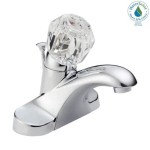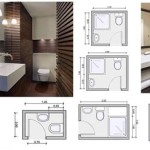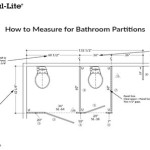Spanish Words for Bathroom Sink: A Comprehensive Guide
Understanding the Spanish vocabulary related to common household items can significantly enhance communication and comprehension when interacting with Spanish-speaking communities or while traveling in Spanish-speaking countries. The bathroom sink, a ubiquitous fixture in any home, has several Spanish translations depending on the context and regional variations. This article provides a detailed exploration of the Spanish terms for "bathroom sink," along with related vocabulary and practical usage examples.
The most common and widely accepted translation of "bathroom sink" in Spanish is "lavabo." This term is generally understood across different Spanish-speaking regions and is often the first word that comes to mind when referring to this fixture. However, alternative terms exist and are frequently used in specific geographical locales, reflecting the rich linguistic diversity within the Spanish language.
Another common term is "fregadero," which, while literally meaning "sink," is often used to refer to the bathroom sink as well, especially in certain parts of Spain and Latin America. The context usually clarifies whether one is referring to a kitchen sink or a bathroom sink. The word "pila" is also used, primarily referring to a basin or a sink in general, and is common in some regions like Argentina and Uruguay.
Comprehending these different terms and their regional preferences enables more effective communication and avoids potential misunderstandings. Furthermore, learning related vocabulary, such as the components of a sink and common phrases associated with its use, can broaden one's linguistic capabilities and improve fluency in Spanish.
Key Point 1: Primary Translations of "Bathroom Sink"
The Spanish language offers several translations for the English term "bathroom sink." The most prevalent and universally recognized term is "lavabo." This word directly corresponds to the fixture found in a bathroom used for washing hands, face, and performing other personal hygiene tasks. Its acceptance and usage span across various Spanish-speaking countries, making it a safe and reliable choice for general conversation.
However, the term "fregadero" can also refer to a bathroom sink, although it more typically describes a kitchen sink. The usage of "fregadero" for a bathroom sink is more common in specific regions of Spain and Latin America. When using "fregadero," the context of the conversation usually clarifies whether the speaker is referring to the kitchen or bathroom fixture. To avoid ambiguity, it is beneficial to specify "fregadero del baño," which directly translates to "bathroom sink."
Another valid translation is "pila." This term broadly means "basin" or "sink" and is used in various contexts, including describing a bathroom sink. Its usage is particularly prevalent in countries like Argentina and Uruguay. Like "fregadero," the context often indicates whether the reference is to a bathroom sink, a kitchen sink, or another type of basin.
The choice of which term to use often depends on the region and the specific audience. While "lavabo" is generally safe and universally understood, understanding the regional preferences for "fregadero" and "pila" can enhance communication and demonstrate cultural awareness.
For example, saying "Necesito lavar las manos en el lavabo" translates to "I need to wash my hands in the bathroom sink" and is perfectly acceptable in most Spanish-speaking regions. Alternatively, saying "Voy a lavar mi cara en el fregadero del baño" (I am going to wash my face in the bathroom sink) is also correct, especially when specifying that it's the bathroom sink. Similarly, "Hay una pila en el baño" (There is a sink in the bathroom) works well in regions where "pila" is commonly used in this context.
Key Point 2: Components and Related Vocabulary
Expanding one's vocabulary beyond the primary translations of "bathroom sink" involves learning the names of its components and related terms. This enhances the ability to describe issues, ask for repairs, and engage in more detailed conversations about bathroom fixtures.
The faucet, or tap, is commonly referred to as "grifo." The phrase "el grifo del lavabo" translates to "the bathroom sink faucet." Knowing this term is crucial for describing issues such as a leaky faucet: "El grifo está goteando," which means "The faucet is dripping."
The drain is typically called "desagüe." A clogged drain would be described as "El desagüe está obstruido" or "El desagüe está tapado," both meaning "The drain is clogged." Knowing the term "desagüe" is essential for reporting plumbing problems.
The countertop or surface surrounding the sink is generally referred to as "encimera." This term is not exclusive to bathroom sinks and is also used for kitchen countertops. To specify "bathroom sink countertop," one could say "la encimera del lavabo."
The overflow drain, designed to prevent flooding, is called "rebosadero." If this is malfunctioning, one might say "El rebosadero está bloqueado" meaning "The overflow is blocked."
Other related terms include: "espejo" (mirror), "estante" (shelf), "toalla" (towel), "jabón" (soap), and "pasta de dientes" (toothpaste). These words frequently accompany discussions about bathroom sinks and their usage.
Examples of how these terms can be used in context include: "Necesito cambiar el grifo del lavabo" (I need to change the bathroom sink faucet), "Hay un charco de agua debajo del lavabo" (There is a puddle of water under the bathroom sink), "La encimera del lavabo está sucia" (The bathroom sink countertop is dirty), and "Por favor, pasa la toalla que está al lado del lavabo" (Please pass the towel that is next to the bathroom sink).
Key Point 3: Usage in Common Phrases and Sentences
Learning how to incorporate the vocabulary for "bathroom sink" into common phrases and sentences significantly enhances conversational fluency. This extends beyond simply naming the object and allows one to express actions, needs, and observations related to it.
Here are some common phrases and sentences that incorporate the Spanish words for bathroom sink:
- "Voy a lavarme las manos en el lavabo." (I am going to wash my hands in the bathroom sink.)
- "¿Dónde está el jabón en el lavabo?" (Where is the soap in the bathroom sink?)
- "El lavabo está sucio, necesita limpieza." (The bathroom sink is dirty, it needs cleaning.)
- "Hay una fuga debajo del lavabo." (There is a leak under the bathroom sink.)
- "¿Puedes enchufar el lavabo, por favor?" (Can you plug the sink, please?) - Referring to closing the drain with a stopper.
- "El agua no baja por el desagüe del lavabo." (The water is not going down the bathroom sink drain.)
- "Necesito un nuevo lavabo para el baño." (I need a new bathroom sink for the bathroom.)
- "¿Qué tan alto es el lavabo?" (How high is the bathroom sink?)
- "Este lavabo es muy moderno." (This bathroom sink is very modern.)
- "Limpia el lavabo después de usarlo." (Clean the bathroom sink after using it.)
For using "fregadero" in a bathroom context, which, as mentioned, requires clarification:
- "Voy a lavarme la cara en el fregadero del baño." (I am going to wash my face in the bathroom sink.)
- "Este fregadero del baño es más pequeño que el de la cocina." (This bathroom sink is smaller than the kitchen one.)
And for using "pila":
- "La pila del baño está rota." (The bathroom sink is broken.)
- "Limpio la pila después de cepillarme los dientes." (I clean the sink after brushing my teeth.)
By practicing these phrases, one can become more comfortable and confident in using the Spanish vocabulary for "bathroom sink" in real-life conversations. This contributes to effective communication and a deeper understanding of the Spanish language's nuances.
In conclusion, mastering the Spanish vocabulary related to the bathroom sink requires understanding the multiple translations available, including "lavabo," "fregadero," and "pila," and recognizing their regional preferences. Further, developing a repertoire of related terms, such as "grifo," "desagüe," and "encimera," helps in describing the components and issues associated with the fixture. Finally, incorporating this vocabulary into common phrases and sentences promotes active language use and enhances communication skills. This comprehensive approach ensures effective communication when discussing this common household item in Spanish.

Spanish Bathroom Voary By Picture Langwid Learn Age Widget

Spanish Words For Bathroom And Components Infographic Classroom

40 Bathroom Items In Spanish Voary For Beginners

Voary Of The House In Spanish Parts And Furniture

Exploring The Bathroom In Spanish Components And Voary

Spanish Words For Bathroom And Components Infographic

How To Say Sink In Spanish What Is The Meaning Of Lavabo Ouino

Exploring The Bathroom In Spanish Components And Voary

Spanish Bathroom Voary By Picture Langwid Learn Age Widget

A Complete Voary Guide To The Bathroom In Spanish
Related Posts







